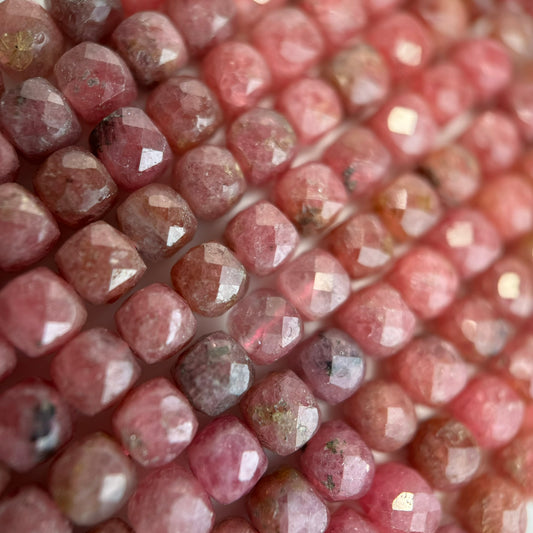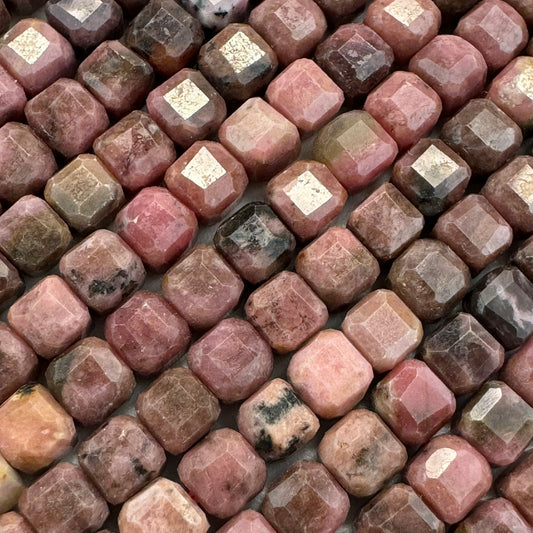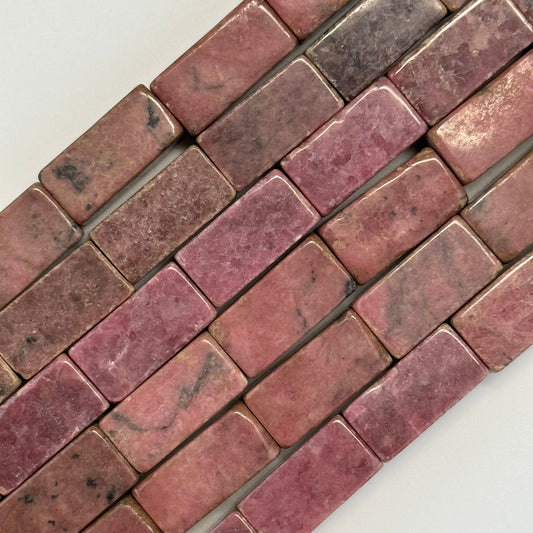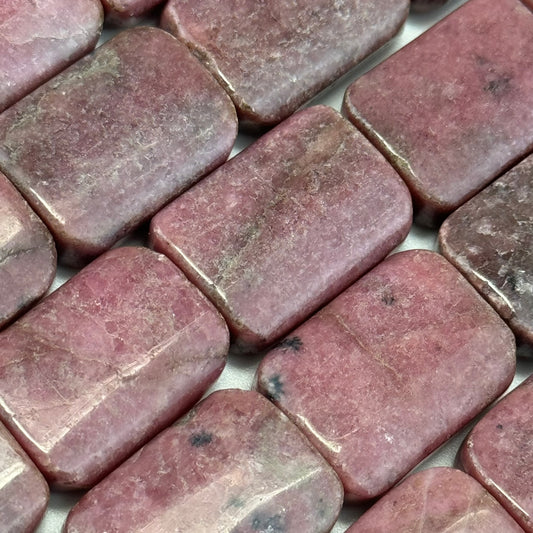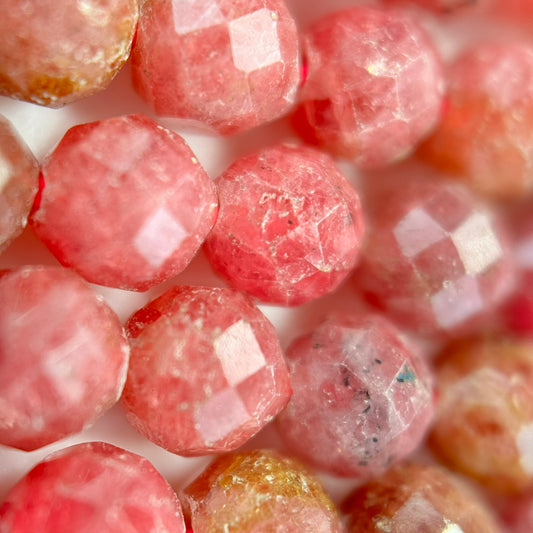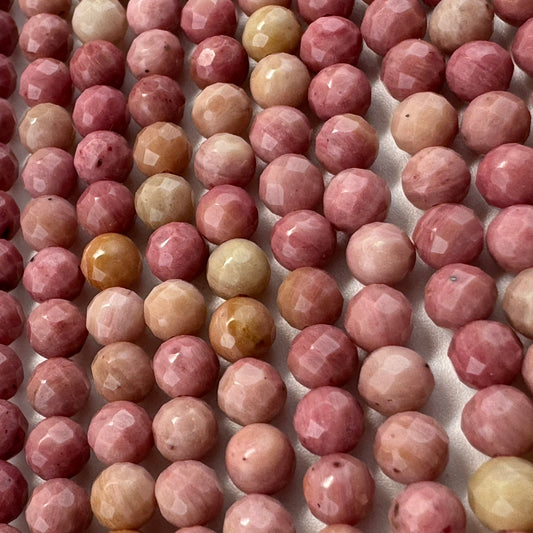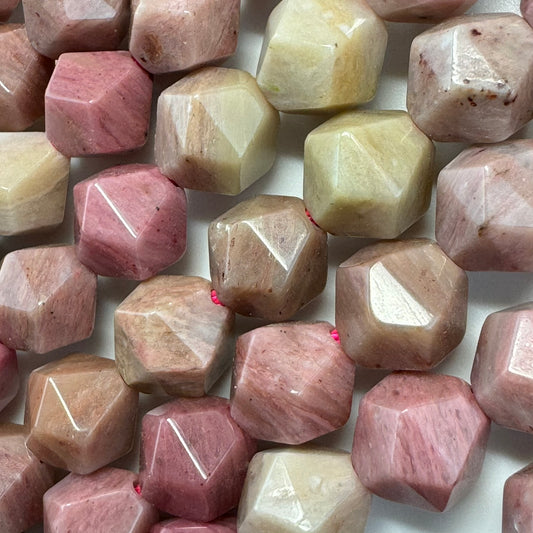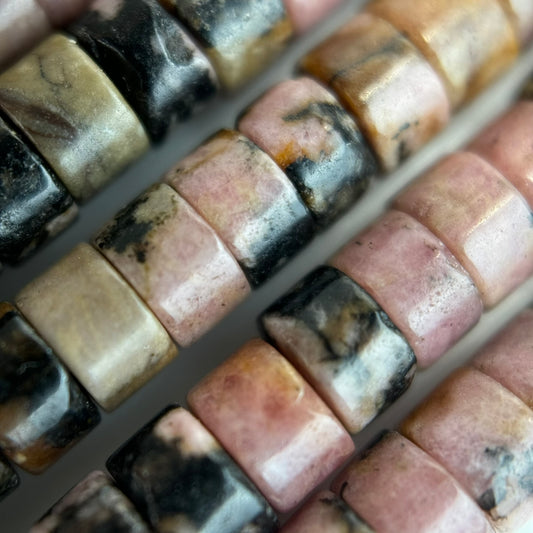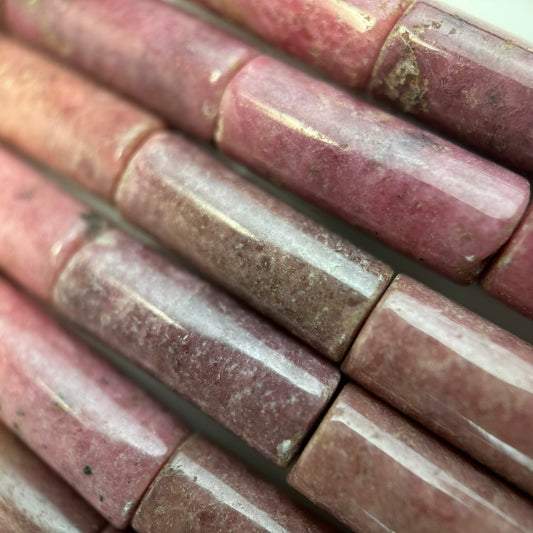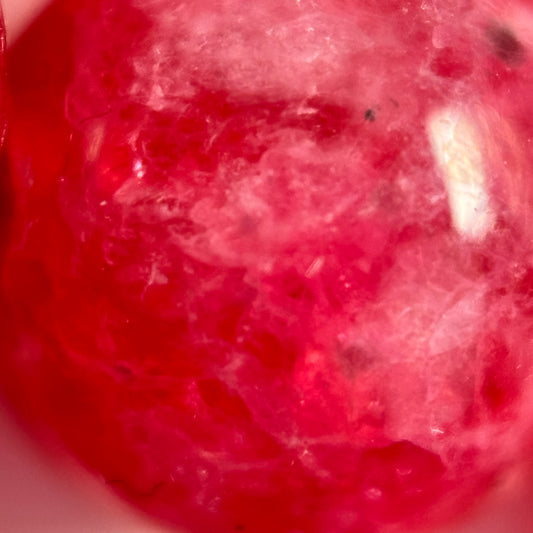Rhodonite Gemstone & Crystal Beads
Rhodonite Gemstone & Crystal Beads: Pink and Black Harmony for Emotional Healing
Discover the balanced beauty of rhodonite gemstone and crystal beads, featuring soft pink to rose hues with distinctive black manganese oxide veining. These harmonious gemstone beads combine emotional healing properties with striking visual contrast, making them perfect for creating meaningful, healing-focused jewelry.
Rhodonite's Healing Characteristics
- Soft Pink Base: Gentle rose to deeper pink tones that soothe and calm
- Black Veining: Natural manganese oxide patterns create dramatic contrast
- Emotional Healing: Known for promoting emotional balance and self-love
- Unique Patterns: Each bead displays its own distinctive black veining pattern
Healing Jewelry Applications
- Therapeutic Jewelry: Perfect for pieces that support emotional wellness
- Balance Collections: Ideal for jewelry that promotes inner harmony
- Self-Care Accessories: Excellent for mindful jewelry that nurtures the wearer
- Meaningful Designs: Great for pieces that honor emotional healing journeys
Working with Rhodonite Contrast
- Showcase the black veining by using beads where the patterns are prominent
- Create visual interest by alternating between heavily veined and more solid pink beads
- Combine with complementary colors that enhance both pink and black aspects
- Use as focal points in designs that celebrate the stone's healing properties
- Design with intention to honor the emotional healing nature of rhodonite
Healing Selection & Balance
Each rhodonite gemstone and crystal bead is thoughtfully chosen by expert gemologist Reza Piroznia, ensuring authentic stones with beautiful pink coloration and distinctive black veining. These beads are perfect for jewelry makers who want to create pieces that combine visual beauty with emotional healing and inner balance.
Frequently Asked Questions
What is a Gemstone Bead?
A gemstone bead is a small, decorative object that has been shaped and polished into a piece that can be used in jewelry or other crafts. Gemstone beads are usually drilled so they can be strung on a thread or wire and integrated into various artistic designs.
What are Rhodonite Beads?
Rhodonite beads are semi-precious gemstone beads made from rhodonite, a manganese inosilicate that is typically pink to red in color, often with black veins of manganese oxide. These beads are highly valued in jewelry-making for their rich, warm colors and unique patterns.
What are the physical properties of Rhodonite?
Rhodonite is a hard and durable stone, making it ideal for use in jewelry. It has a Mohs hardness of 5.5 to 6.5, which means it's resistant to scratching and wear. Its colors can range from light pink to deep red, often with distinctive black and brown veining.
What are the metaphysical properties of Rhodonite Beads?
Rhodonite is known as a stone of compassion and emotional balance. It is believed to stimulate, clear and activate the heart, encouraging forgiveness and love. Many also believe it can help heal emotional scars and nurture feelings of self-love and worth.
How should I care for and maintain my Rhodonite Beads?
Avoid exposing your rhodonite beads to harsh, abrasive chemicals or extreme heat. Clean them with warm, soapy water and dry them thoroughly before storage. To enhance their shine, you can also polish them with a soft cloth.
How can I use Rhodonite Beads in jewelry making?
Rhodonite beads are versatile and can be used in a variety of jewelry pieces such as necklaces, bracelets, earrings and pendants. Their rich color and unique veining make them an eye-catching focal point in any design.
How do I assess the quality of Rhodonite Beads?
High-quality rhodonite beads should have a smooth surface without any chips or cracks. They should also have a deep, uniform color with distinctive veining. Always purchase from a reputable source to ensure authenticity and quality.
What historical and cultural significance do Rhodonite Beads have?
Rhodonite was once used to make ornamental objects and jewelry in Russia’s Ural Mountains, and it's now the official gemstone of Massachusetts. Throughout history, it has been associated with emotional healing, compassion, and balance.
What are the healing and spiritual properties of Rhodonite Beads?
In crystal healing, rhodonite is used to promote balance, emotional healing, and the release of fear and panic. It's known as a rescue stone and is thought to help with calming emotional shock and panic, giving grounding energy during stressful or chaotic times.
What are some tips for storing and preserving Rhodonite Beads?
Store your rhodonite beads separately from other gemstones to prevent scratching. A soft pouch is ideal for this. Keep them in a dry, cool place away from sunlight as prolonged exposure may cause the color to fade.
Do you have any Rhodonite styling tips?
Pair rhodonite beads with silver or white metals for a modern look, or with gold for a warmer, more classic style. These beads also pair well with black gemstones or beads, which can highlight the distinctive black veins in the rhodonite.
What should I know about stringing Rhodonite beads?
Because of their hardness, rhodonite beads can be strung on most types of beading thread or wire. Using a wire protector can help prevent wear and tear on the stringing material, extending the life of your jewelry piece.
What is the market value of Rhodonite Beads?
The value of rhodonite beads can vary based on factors such as size, color, clarity, and overall quality. However, they are typically more affordable compared to many other gemstone beads, making them a popular choice for jewelry makers.
How can I verify the authenticity of Rhodonite Beads?
You can verify the authenticity of rhodonite by checking for its characteristic color - usually pink to red with black veins. However, a definitive identification might require a professional gemologist. It's also important to buy from a trusted source.
Where are Rhodonite Beads typically sourced from?
Rhodonite is commonly found in Australia, Brazil, Canada, England, Mexico, Peru, and Russia. Where the beads are sourced can potentially impact their color and pattern.
What stones can I pair with Rhodonite Beads?
Rhodonite pairs well with black onyx, obsidian, or hematite beads. Clear quartz, rose quartz, and amethyst beads can also complement the warm tones of rhodonite beautifully.
What are some beginner-friendly projects using Rhodonite Beads?
Beginners can start with a simple beaded necklace or bracelet. String rhodonite beads onto a thread or wire, then add a clasp. As you gain confidence, you can experiment with different bead sizes, or incorporate other types of beads for contrast.
What are some advanced beadwork techniques with Rhodonite Beads?
Advanced jewelry makers can try techniques like wire wrapping or bead weaving with rhodonite beads. These techniques can add depth and complexity to your designs, helping to showcase the unique beauty of rhodonite.
What are some common misconceptions about Rhodonite Beads?
One common misconception is that rhodonite beads are dyed or artificially colored due to their vibrant pink color. However, this is the natural color of the gemstone, often with distinctive black veining.
What are some professional tips when working with Rhodonite Beads?
Make sure to use a beading needle with an appropriate size hole to avoid damaging the beads. Try to plan your design ahead, taking into account the size, color, and pattern of the beads. Remember, no two rhodonite beads are identical, so embrace the uniqueness of each bead.







